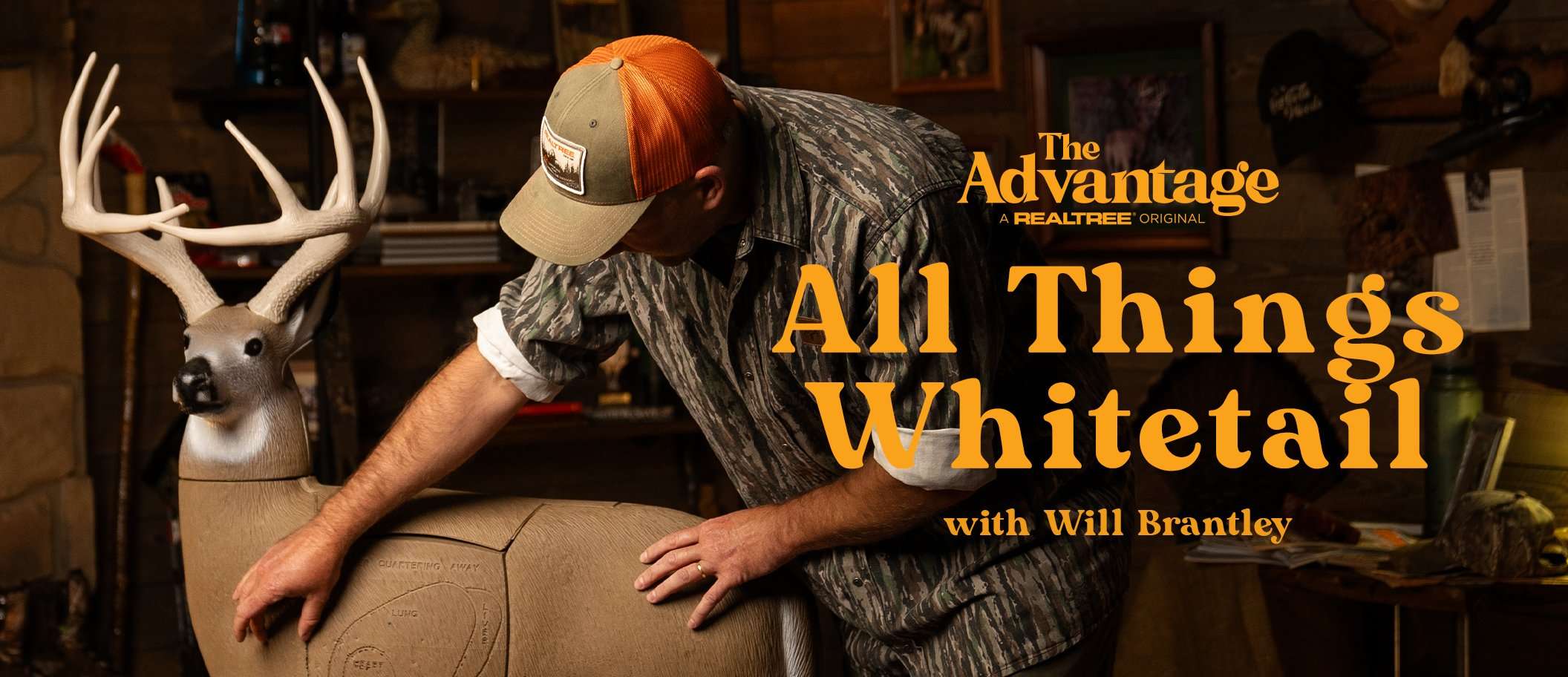The new cartridge beats 7 PRC ballistics while being adaptable for use in shorter, lighter rifles
Many veteran hunters and shooters view new cartridges with one part curiosity to three parts skepticism. Sure, new rounds are cool, but do we really need them, given that it’s still difficult to find ammo for some of the proven classics? And, can any new cartridge really satisfy some need that an existing round doesn’t already have covered?
In the case of Federal’s new 7mm Backcountry (7 BC for short), the answer is actually yes. This cartridge will allow for magnum performance, exceeding the 7mm PRC, in shorter, lighter rifles with higher magazine capacity. But that’s not due to a new bullet design or take on case dimension, but to a completely new case material called Peak Alloy. The material is a high-strength steel alloy, using other elements, that’s manufactured by way of a proprietary process. According to Federal, similar alloys have been used in other high-strength applications, including gun safes, automotive impact structures, and nuclear reactors. Federal created Peak Alloy in response to U.S. military solicitations, and it has been under development for six years.
The 7 BC cartridge case is a monolithic, high-strength case that’s nickel-plated for corrosion resistance (a completely different product from the steel-cased surplus ammo you may have used on the range). The case allows for a much higher operating pressure than a brass casing (80,000 psi compared to 65,000 psi), but without compromising the firearm. Generally speaking, Peak Alloy allows the case — not the gun — to take the added abuse from the increased pressure. According to Federal engineers, testing with Peak Alloy cases and legacy cartridges like 5.56 and 7.62 has shown velocity increases of 300 to 400 fps without affecting rifle reliability.
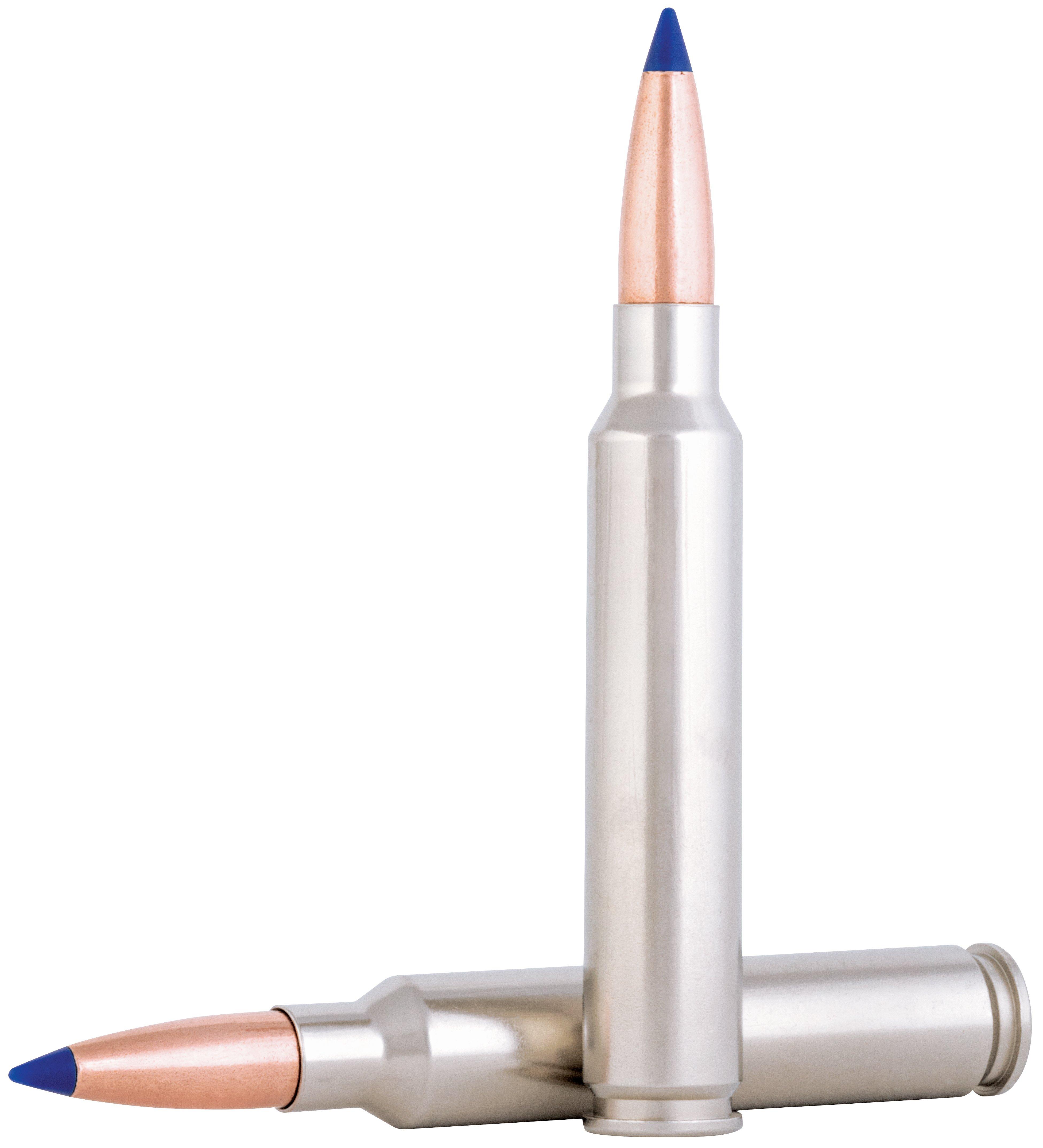
Federal’s new 7mm Backcountry has a Peak Alloy case that safely allows pressures of 80,000 psi and is capable of 3,000 fps with 170-grain bullets from just a 20-inch barrel. Image by Federal Premium.
THE 7 BC vs. THE 7 PRC
The 7 BC cartridge is Federal’s way of introducing Peak Alloy technology to the hunting and shooting public. Additional cartridges are likely to follow. Under a non-disclosure agreement, I’ve been using the 7 BC through a couple of rifles since September, and it is impressive.
The ballistics of the 7 BC are best compared to Hornady’s 7 PRC, which is one of the best long-range hunting cartridges on the market today. Advertised ballistics for the 7 PRC are 3,000 fps at the muzzle with a 170-grain bullet and 24-inch barrel. The 7 PRC is a big cartridge with a .532 case head diameter. Most rifles chambered for it hold just two or three cartridges in the magazine. The 7 PRC, with a brass case, operates at a maximum pressure of 65,000 psi.
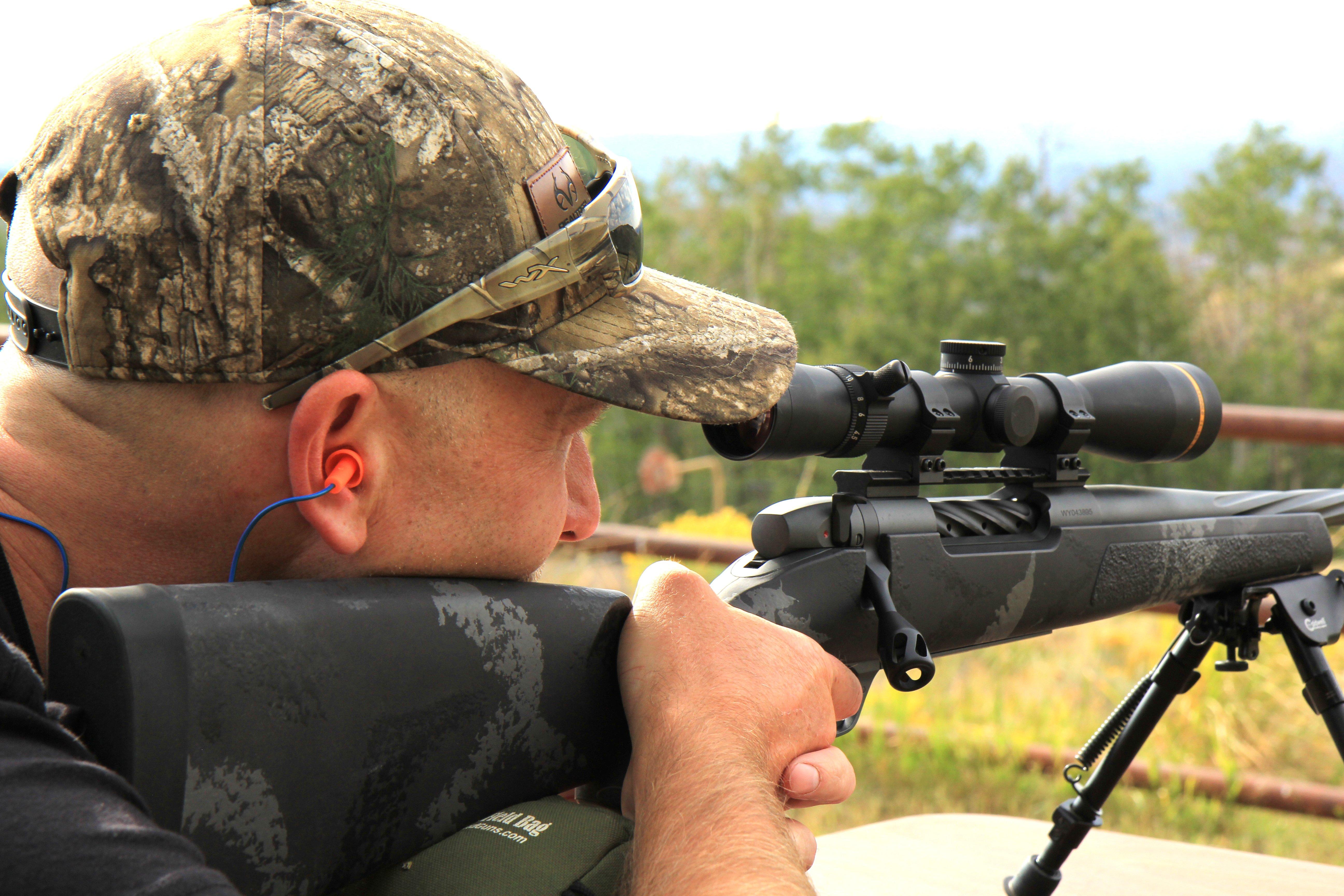
The author takes aim at a 600-yard plate with a lightweight Weatherby rifle chambered in the new 7mm Backcountry.
With an operating pressure of 80,000 psi, the same 170-grain bullet from the 7 BC is as fast from a 20-inch barrel as the 7 PRC is from a 24. Out of a 24-inch barrel, the 7 BC is about 200 fps faster than the 7 PRC. Yet, it does all of that in a more compact package. The long-action 7 BC case has a standard .473 case head diameter, meaning it’s roughly the size of a .280 Ackley, or even a .270 Winchester or .30-06. As such, most rifles chambered for it will hold four cartridges, plus one in the chamber. If you’re wondering, there is no big increase in perceived recoil, either. If you can handle the 7 PRC, 7mm Rem. Mag., or .300 Win. Mag., you’ll have no trouble with the 7 BC.
BACKCOUNTRY SETUPS
I’m not into long-range hunting, but I have spent time with a number of new rifle, cartridge, and optic combos. The reality is that the average hunter’s effective range can be extended with modern equipment. Still, one of my big gripes with many long-range setups is how long, heavy, and cumbersome they can be. Add a suppressor and scope to a rifle with a 24- or 26-inch barrel and you’re suddenly looking at a package that’s 4 1/2 feet long and weighs more than 10 pounds. That’s not something I want to thread out the window of a box blind or lug around in the mountains.
The 7 BC rifles I hunted with last fall both had 20-inch barrels and weighed less than 6 pounds before adding a scope. And both more than proved themselves on the range and on game.
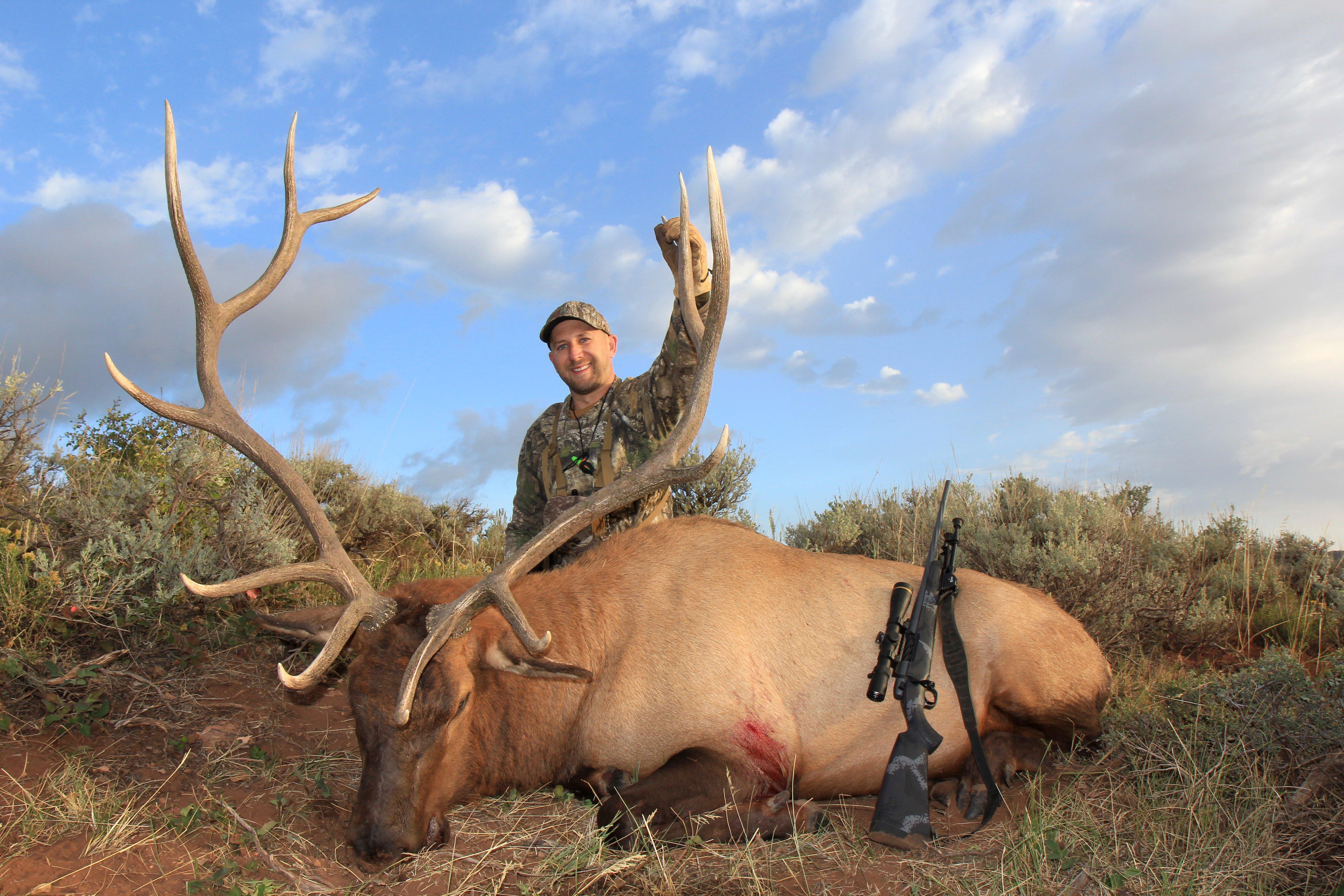
The author tagged this nice 6-by-6 bull in Utah with the 7 BC and a Weatherby rifle. One bullet at 175 yards was enough.
On a September elk hunt in Utah, I used a Weatherby Mark V Live Wild, which I topped with a standard 4.5-14X scope. I dialed it in at 100 yards with 170-grain Federal Terminal Ascent. The setup shot sub-MOA and clocked 3,050 fps at the muzzle on my Garmin Xero Chronograph. I killed a big 6-by-6 bull with a single bullet through the heart and lungs at 175 yards. It did the job within seconds. Other hunters in camp took two other bulls and a trophy mule deer with the 7 BC that week, all with similar results. I also got a chance to stretch the cartridge out on the 600-yard range. Despite the lightweight and relatively inexpensive setup, ringing steel at a distance was no problem.
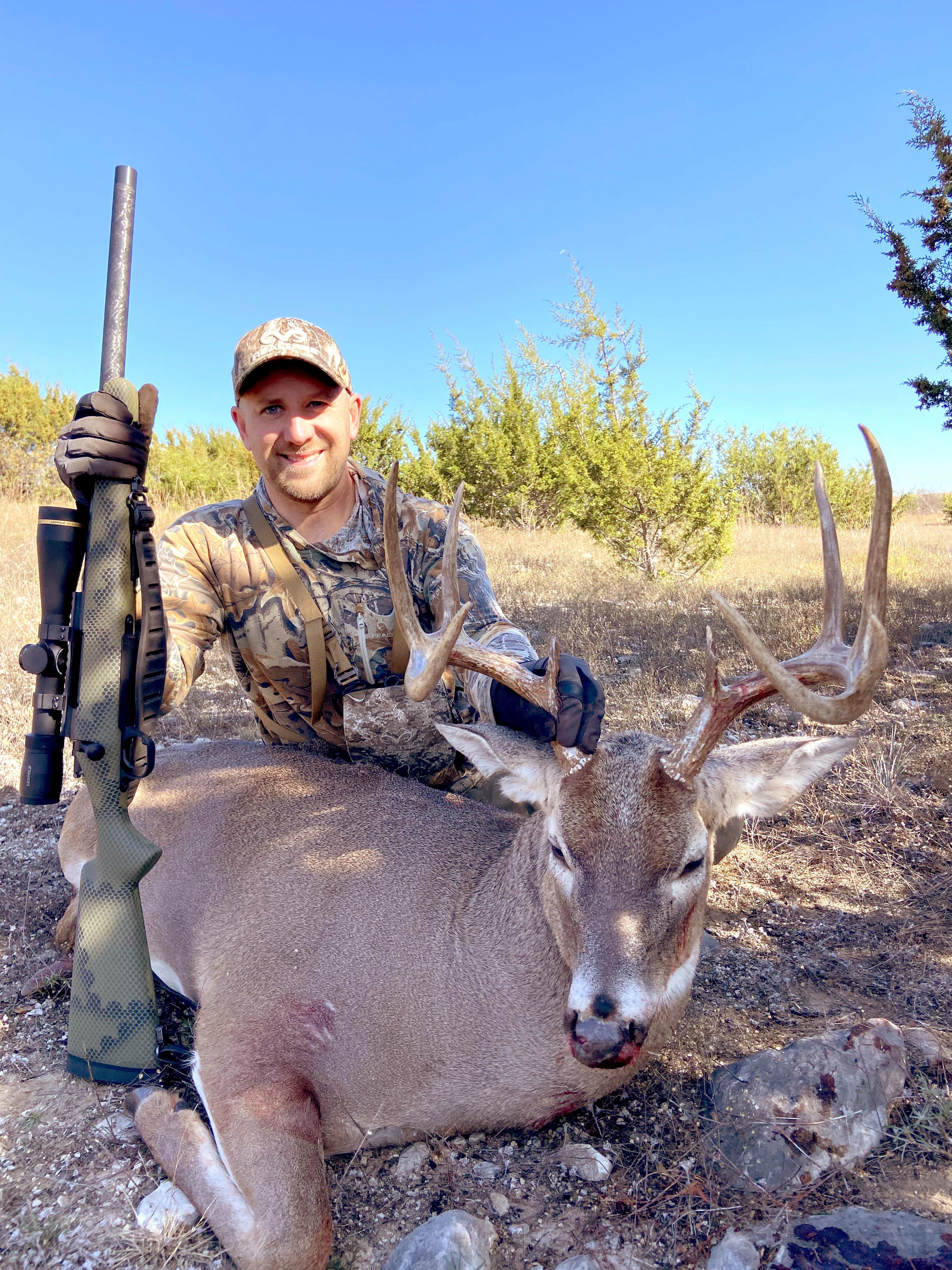
This Texas whitetail fell to a Proof Research Lightweight Hunter chambered in 7 BC. The shot distance was 412 yards.
Later in the fall, I carried a Proof Research Lightweight Hunter chambered in 7 BC to my Texas deer lease. That rifle is one to drool over, with a carbon-fiber barrel and stock, and sub 1/2-MOA guarantee — but also a hefty price tag. I paired it with a 3-15x44 scope, and also dialed it in at 100 yards, where just about every bullet in a five-shot group hit the same hole. I used that setup to kill a heavy old 9-point buck at 412 yards, after we spotted him at midday tending a doe in a cedar thicket. Again, a single 170-grain Terminal Ascent through the shoulders did the job.
THE TAKEAWAY
For hunters, the ability to replicate 7 PRC performance from a 6-pound, 20-inch gun is a big deal. That’s especially true for mountain hunters who have to consider every ounce that they carry — but also might have to take a 450-yard shot. But there are more perks to a short barrel, including the ability to add a suppressor without making the gun difficult to maneuver.
“One of the big applications we see for this technology is in the trend toward shortening barrels and making firearms more compact and maneuverable, partly to accommodate suppressors,” said Jake Burns, Federal’s product development engineering manager, who was with me on my Utah elk hunt. “Anytime you shorten a barrel, you lose muzzle velocity and the ballistics that go with it. Now, we can get that velocity back while keeping the short barrel.”
Don’t Miss: Tyler Jordan Bags Potential Louisiana State-Record Buck
But the 7 BC isn’t just notable on its own. There are likely more cartridges on the horizon, and the Peak Alloy technology could even be adapted to existing cartridges down the road. “We figured if you could get 300 or 400 fps added in 5.56, you could apply the same thing to a commercial cartridge,” Burns said. “We could take something existing, like .30-06 or 6.5 Creedmoor, apply the same technology, and potentially get a 400-fps gain in muzzle velocity.
“This is the biggest step change that we’ve worked on in rifle cartridges. We’ve done incremental type improvements, but this to me is a leap,” Burns continued. “Everyone has used brass cases for over a century. Bullets have improved tremendously, but it’s still copper and lead. This really is a completely new avenue for ammo manufacturing and performance.”
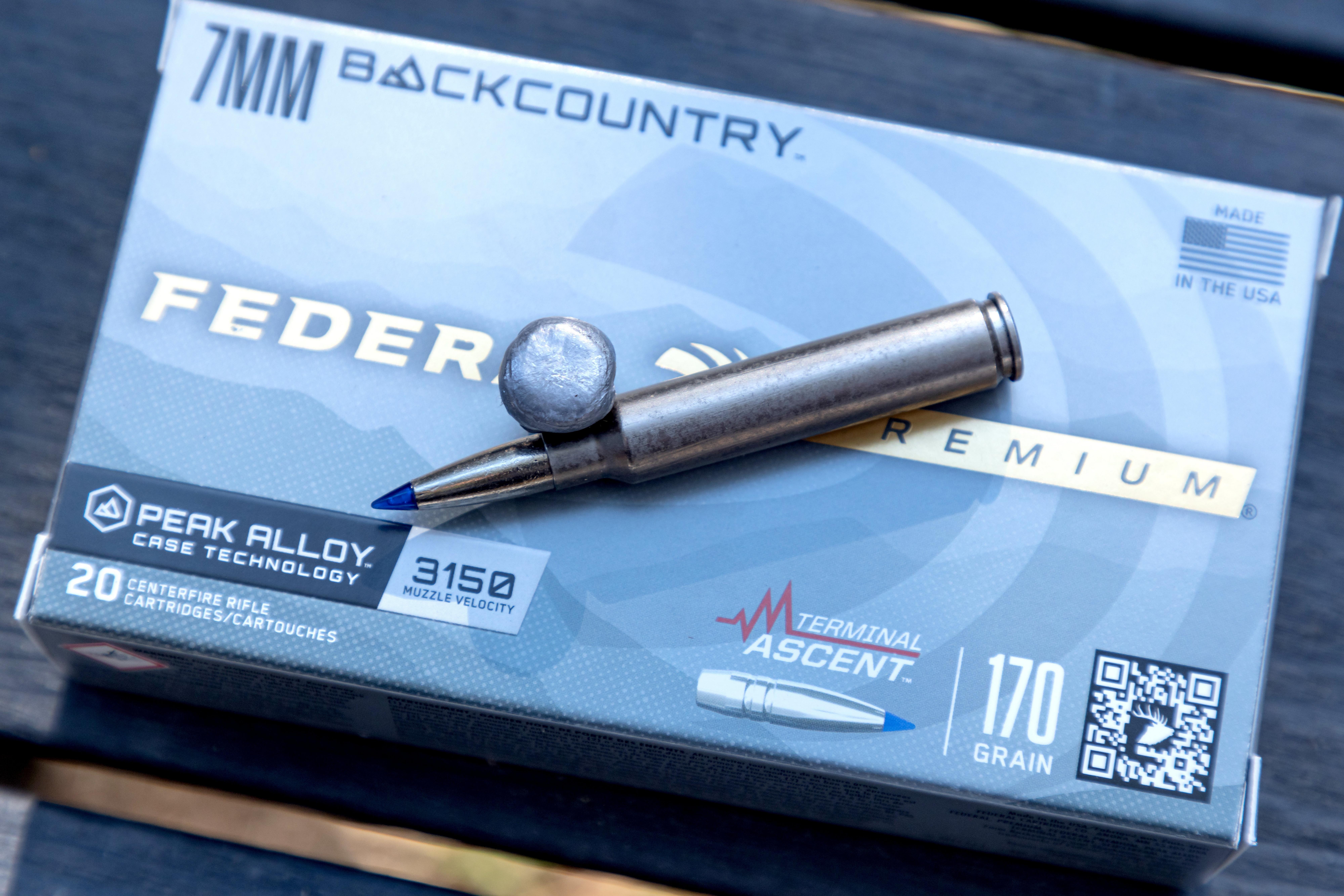
The 7 BC will initially be offered with five different bullet options, including a 155-grain and a 170-grain Terminal Ascent. Image by Federal Premium.
7MM BACKCOUNTRY HIGHLIGHTS
- Peak Alloy case allows for substantially higher pressures than a brass case, resulting in higher velocity and energy
- SAAMI approval is expected at 2025 SHOT Show
- Available bullets initially include 155- and 170-grain Terminal Ascent, 195-grain Berger Elite Hunter, 168-grain Barnes LRX, 175-grain Fusion Tipped
- Advertised ballistics (170-grain Terminal Ascent) are 3,000 fps from a 20-inch barrel and 3,150 fps from a 24-inch barrel
- Case is reloadable
- Ammunition is expected to cost 5% to 10% more than brass-cased ammunition
- Current rifle options (as of January 2025) include more than 80 models from Weatherby, Proof Research, Christensen Arms, Savage, Gunwerks, Ruger, and more
- Learn more about the 7mm Backcountry from Federal Premium






